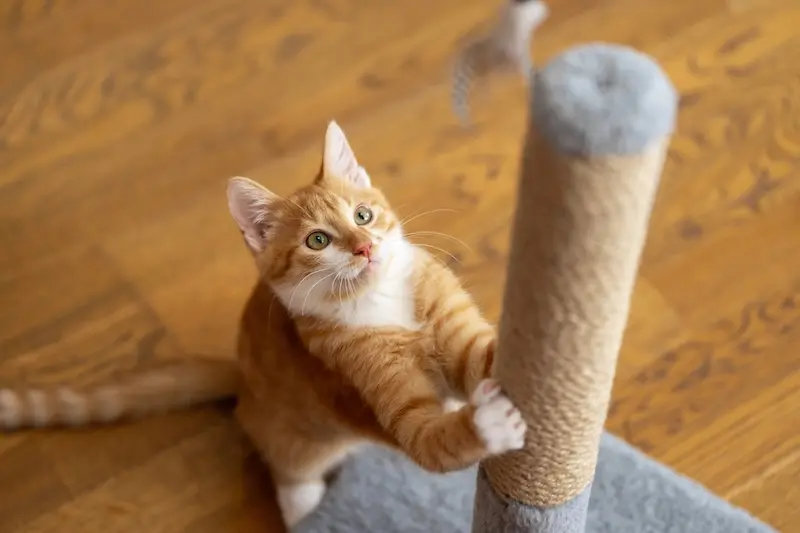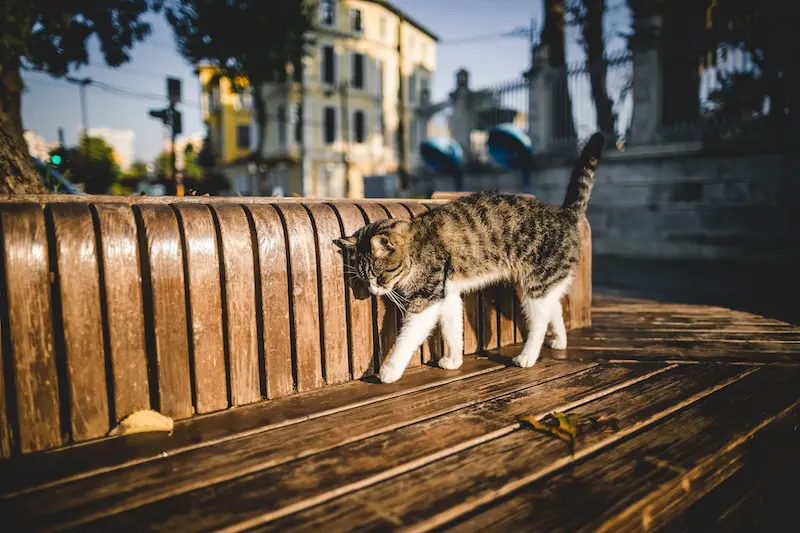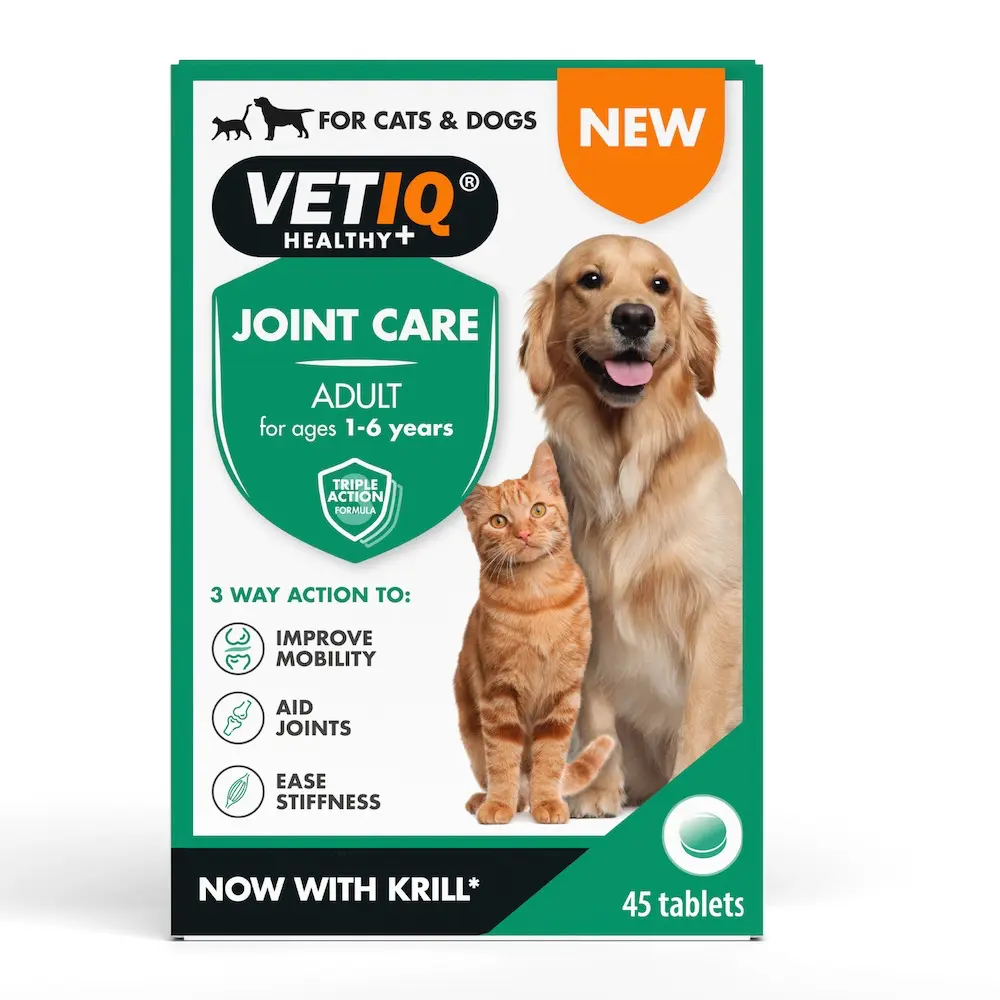Cats are masters of disguise, especially when it comes to hiding pain! Joint issues like arthritis often fly under the radar, making joint pain in cats something many pet parents don’t think about until their feline friend starts skipping the windowsill or sleeping more than usual (yes, even more than usual!).
While arthritis is most common in senior kitties, younger cats aren’t immune; injuries or specific conditions can cause joint trouble at any age. But don’t worry; there are ways to help!
In this post, we’ll show you how to spot the subtle signs of joint pain and walk you through the best treatment and management options to keep your whiskered companion purring, playful, and pain-free!
Recognising joint pain in cats
Cats are stealthy little creatures, especially when they’re not feeling 100%. Their instinct to hide discomfort means that joint pain often flies under the radar until it becomes harder to ignore. That’s why recognising joint care in cats early is so important. The sooner you catch the signs, the sooner you can help your feline friend feel like their springy, sofa-leaping self again.
Spotting joint pain involves watching out for both physical symptoms and changes in personality. From stiffness and limping to mood swings and avoiding playtime, your cat may be giving you clues; they’re just subtle ones. Let’s decode them together.
Physical signs of joint pain in cats
Physically, joint pain in cats can show up in a few not-so-glamorous ways. That effortless elegance they usually carry might start to look a bit more clunky. Keep an eye out for:
- Stiffness when walking, running, or jumping – graceful leaps might be replaced with awkward scrambles (or skipped altogether).
- Limping or favouring one leg – a sure sign that something’s hurting beneath the fur.
- Hesitation on stairs or furniture – reluctance to climb or jump can indicate joint discomfort.
- Changes in grooming habits – painful joints can make it hard to reach certain areas, leading to matted fur, greasy patches or flaky skin
- Muscle wastage – particularly around the legs and hips, due to reduced movement.
- Swollen or tender joints – inflammation may be visible or cause them to flinch when touched.
- Unusual posture – sitting or lying in odd positions to avoid putting pressure on sore areas.
If your cat is ticking several of these boxes, it might be time for a trip to the vet.
Behavioural changes linked to joint pain in cats
Before you even notice the physical signs, your cat’s behaviour may start to change. These subtle shifts are often the first hints that something’s up. Here’s what to watch for:
- Sleeping more than usual – because every movement feels like a chore.
- A drop in playfulness – even their favourite feather wand might not tempt them.
- Irritability or sensitivity when touched – especially around sore joints.
- Avoiding favourite high spots – suddenly skipping the windowsill, counter, or sofa backrest
- Changes in litter tray habits – struggling to get in and out of the tray, or avoiding it entirely
In general, cats with joint pain may seem less agile, less energetic, and just a bit “off.” A cat that suddenly refuses to leap might not be lazy; they might just be sore!
Causes of joint pain in cats
Understanding why joint pain develops can help you prevent it, or at least manage it better. Feline joint issues aren’t always a simple matter of age. Sure, getting older plays a role, but it’s not the whole story.
Cats can develop joint pain from:
- Previous injuries or trauma
- Genetic conditions like hip dysplasia
- Carrying extra weight
- Poor nutrition
- Inflammatory conditions, such as arthritis
Any of these culprits can lead to a gradual breakdown of joint cartilage that results in pain, stiffness, and mobility problems.
Ageing and wear & tear
Just like us, cats get a little creaky with age. Over time, the cartilage in their joints starts to wear down, leaving bones to rub against each other. Ouch. This slow degeneration leads to stiffness and soreness, particularly in senior cats who aren’t bouncing back from activity like they used to.
This is why older cats often need extra TLC, including regular vet check-ups, comfy places to rest, and changes to their environment to help them stay mobile without extra strain.
Other contributing factors
Besides the tick-tock of time, several other things can speed up or worsen joint issues:
- Injuries or accidents, especially those affecting the legs or spine
- Breed-related risks, as some cats are genetically prone to joint trouble
- Obesity, which puts extra pressure on already vulnerable joints
- Poor diet, lacking essential nutrients that support joint health
- Systemic or inflammatory diseases, which can trigger joint inflammation
Tackling these early can help prevent joint problems from taking hold, or at least slow their progression.
Preventing and managing ongoing joint pain
Preventing joint pain (or managing it when it’s already here) takes a bit of a game plan. A few lifestyle tweaks and vet-approved strategies can go a long way in keeping your cat comfy.
Here are some key steps:
- Keep your cat at a healthy weight to minimise joint pressure
- Book regular vet visits to catch problems early
- Make your home more mobility-friendly with ramps, steps, or low furniture
- Use low-sided litter trays in accessible areas
- Raise food and water bowls to reduce unnecessary stretching or bending
- Provide comfy bedding that’s easy to access
- Consider gentle physical therapies, like stretching or hydrotherapy
- Create a routine that includes joint-friendly playtime and rest
Think of it as a little lifestyle makeover for your feline friend!
Veterinary guidance & lifestyle adjustments
A solid joint care routine starts with your vet. They can help identify early signs of arthritis or other joint issues, recommend suitable treatments, and guide you on how to adjust your home and daily care routines.
Practical tips include:
- Gentle, low-impact play – less zooming, more slow-mo wand time
- Soft, accessible furniture – think ramps instead of leaps
- Weight control – a little less kibble, a lot more comfort
- Non-slip surfaces – rugs can help prevent accidents and support safe movement
These small changes add up to a more comfortable life for your cat, without compromising their independence or sass.
Supportive therapies for joint pain in cats
There are plenty of supportive therapies that can help ease your cat’s joint pain and support overall mobility:
- Massage and stretching (under guidance) to keep joints flexible
- Warmth therapy, like safe heat pads for sore muscles
- Cold laser therapy; a gentle, non-invasive option to reduce inflammation
- Hydrotherapy; ideal for low-impact muscle strengthening
- Weight loss programs, especially for cats carrying extra pounds
- Vet-approved nutritional support
Support your feline friends with the VETIQ Joint Care range
Keeping your cat spry, supple, and ready for mischief doesn’t have to be a mystery. By spotting early signs of joint pain, you can help your feline stay comfortable and active at every stage of life. And when it comes to extra support, supplements can be a game-changer.
That’s where the VETIQ Joint Care range comes in. Whether your cat is an energetic adult, a dignified senior, or somewhere in between, there’s a tailored option to suit their needs:
- VETIQ Joint Care Adult – a triple-action formula to keep joints lubricated, cartilage protected, and muscles strong.
- VETIQ Joint Care Supplement Chews – delicious bite-sized chews, rich in Omega-3s and antioxidants, they ease stiffness while turning wellness into a treat (perfect for fussy eaters!).
- VETIQ Joint Care Senior Extra+ – tailored for older cats to improve flexibility and bring back their zest for life.
- VETIQ Arthriti-UM Advanced – this high-strength support helps maintain mobility and flexibility in ageing joints.
With the right mix of vet care, lifestyle adjustments, and the VETIQ Joint Care range, you can give your feline friend the comfort, mobility, and playful energy they deserve!








